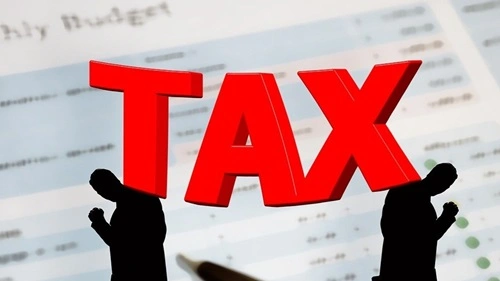VAT or Value Added Tax happens to be a very important part of the Fiscal policy. VAT is a part of the government policy in different countries of the world. It is a very important part of the revenue generation process. But if you want to know about the core VAT is a tax based on consumption. The tax gets levied on the price or value that is added in the supply chain stages. This sort of tax has both advantages and demerits for both the consumers and businesses. In the process of production of certain goods and their distribution, VAT plays a very important part when it comes to the business’ financial success. The input value and the output value of the sales value is calculated here. As a result of this, the businesses find the place of tax collectors. However, for many this is a kind of tax burden. So here we will discuss both the advantages and disadvantages of the VAT process so that you can come up with your own ideas about the system.

Advantages of VAT
1. Enhanced Revenue Generation:
VAT creates a lot of government revenue, which is good. VAT charges diverse economic entities at many stages of production and distribution, unlike earlier tax regimes. VAT’s transparent and efficient collection mechanism and vast base provide governments reliable income. VAT uses supply chain economic activity to support public services and economic development.
- Read this also: Advantages and Disadvantages of Tax Planning
2. Simplicity and Ease of Administration:
VAT simplifies tax administration compared to other tax systems. Compliance is simplified since businesses just need to monitor and submit the tax on product and service value. A supply chain paper trail from VAT lowers tax evasion. Simplification and transparency promote compliance and tax administration, ensuring prompt and accurate tax revenue collection.
3. Neutrality and Export Competitiveness:
VAT is neutral, applying to all goods and services regardless of origin or destination, boosting export competitiveness. Enterprise resource efficiency and fair competition are promoted by neutrality, which avoids market distortions. Export VAT refunds increase local product competitiveness. Reclaiming export VAT enhances export-led growth, economic competitiveness, and international trade.
4. Flexible Tax Rates:
VAT handles multiple tax rates for goods and services well. This flexibility helps governments raise luxury tax rates and lower essential tax rates for progressive tax policy. VAT promotes fiscal responsibility and social equity by matching tax rates to product and service value and social impact. Governments may adapt the tax system to changing economic conditions and goals using flexible tax rates.
5. Reduction of Tax Evasion and Informal Economy:
VAT successfully fights tax evasion and informality. VAT requires enterprises to record and report VAT received and paid at each manufacturing and distribution phase, creating a transaction trail. Open enterprises are less prone to under-report income or evade taxes. VAT encourages enterprises to join the formal sector to recover input VAT, expanding the tax base and compliance. Thus, VAT enhances fiscal governance, tax equity, and economic sustainability.
Disadvantages of VAT
1. Compliance Costs:
VAT compliance is regularly criticized, particularly for SMEs. VAT demands extensive accounting systems, training, and tax personnel. SMEs with limited resources and skills may struggle to grow and compete due to these compliance costs. VAT administrative complexity may deplete business resources, impeding innovation and efficiency.
2. Regressive Nature:
VAT is regressive for low-income households, say critics. VAT, a flat tax on goods and services, affects low-income customers more since they spend more. Regressive taxes hurt disadvantaged populations and create economic inequality. VAT is regressive, which may impair social cohesion and raise socioeconomic disparity, making justice and inclusivity harder for policymakers.
3. Economic Distortions:
VAT may undermine market efficiency by causing economic inefficiencies notwithstanding its neutrality. Businesses may lower VAT duty using convoluted transactions or deceptive supply chain architecture, inefficiently allocating resources. VAT increases costs, reducing consumer spending and economic growth. VAT may hinder resource allocation and sustainable development by affecting consumption and investment.
4. Discouraging Spending:
VAT may reduce consumer spending, reducing economic development. VAT taxes consumption directly, unlike income taxes. VAT increases may promote saving and less spending. Consumer spending decreases may affect businesses, employment, and the economy. VAT’s impact on consumer behavior may hinder economic recovery authorities.
5. Policy Complexity and Exclusions:
Tax exemptions, exclusions, and thresholds complicate VAT legislation. Excluding goods and services from VAT coverage may reduce its regressive impact on disadvantaged areas but complicates management. When designing VAT laws, policymakers must balance revenue and economic incentives. Balance these conflicting goals while ensuring tax fairness and efficiency requires substantial thinking and expertise.
6. Border trade issues
VAT may complicate international trade. Different countries’ VAT rates, thresholds, and compliance requirements may generate administrative issues and disputes between businesses and tax authorities. Import and export VAT legislation, including VAT refunds and reverse taxes, may be confusing for global merchants. Complexities may discourage international trade and investment, restricting economic integration and cooperation.
Conclusion
VAT is the option for the government to generate revenue with administrative efficiency. But of course, like any other process, it has its pros and cons. The complexities that it has, according to the experts, can be addressed and corrected. But the cumulative effects that VAT has for the economy, is undeniable. For the financial policymakers, the aspect of VAT holds a lot of importance. This is why, still now, a large part of the nations prefer VAT as their revenue option.

